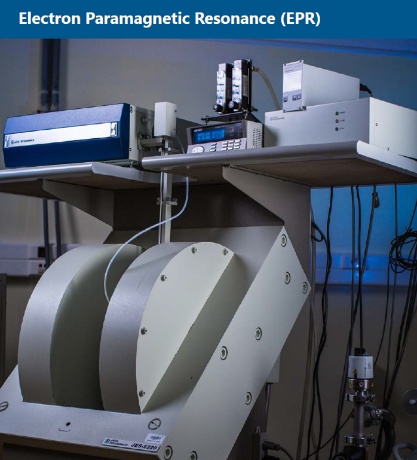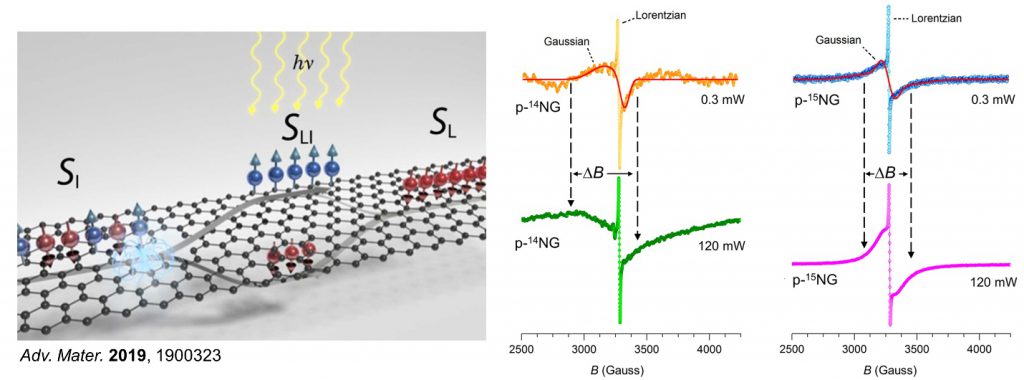

Electron paramagnetic resonance (EPR, aka electron spin resonance (ESR) spectroscopy) is a spectroscopic method for studying compounds of synthetic or biological origin containing unpaired electrons. Such spin-active materials can be purely organic (Adv. Mater. 2019, 31, 1902587) or metallo-organic (e.g. proteins, enzymes, metal complexes, alloys); electron spins are excited and give resonance features that can be correlated to the specific environment of the electron spin moment. EPR is a non-invasive technique and therefore can be applied to living systems, for example to monitor distribution of triplet O2 or NO in tissues. It can be also used as an analytical probe to observe labelled species in situ in biological or chemical reactions (Adv. Mater. 2019, 31, 1900323). The CATRIN-RCPTM centre is equipped with an EPR spectrometer manufactured by JEOL Ltd. (JES-X3 series). The EPR spectra can be measured in the temperature range from 2.5 to 473 K, in the presence of an external magnetic field with field-sweep up to 1.4 T in the X-band region and with a sensitivity of 5 x 109 spins/10-4 T (at 100 kHz modulation).

Head of the group: Aristeidis Bakandritsos, Ph.D,
E-mail: a.bakandritsos@upol.cz
Telephone: +420 585 634 950
Expert scientists: Giorgio Zoppellaro, Ph.D., MSc Zdeněk Badúra
E-mail: giorgio.zoppellaro@upol.cz, zdenek.badura@upol.cz